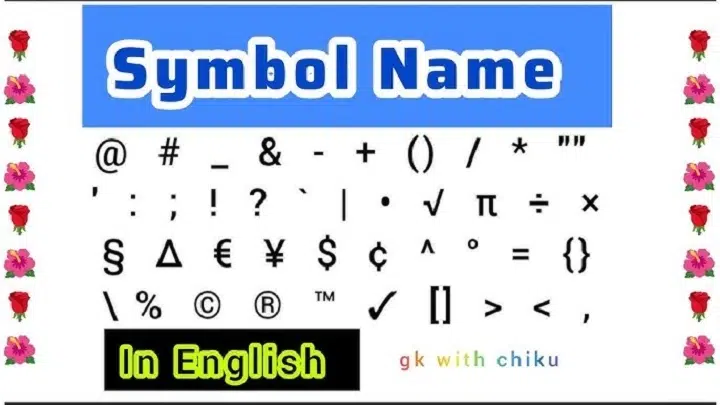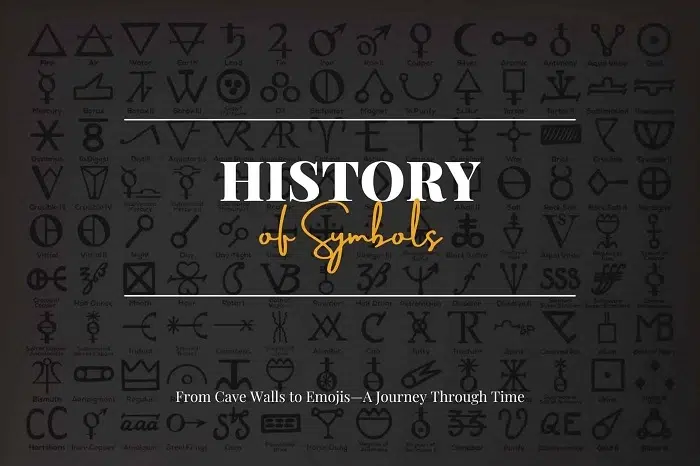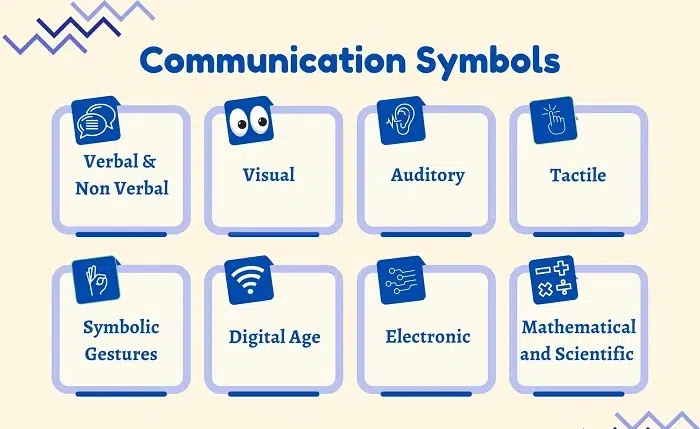Symbols converse without words, and names converse without faces. When paired, we have the concept of the name symbol, a sign or image that represents a person, a brand, or an identity by visual representation. From ancient seals, to logos and symbols in recent times, to emojis, the name symbol traveled through the centuries as powerful symbols of membership, pride, and memory.
A name symbol can be a signature, monogram, emblem, or character that represents uniqueness. It can be applied to jewelry, flags, computer icons, or corporate designs. Whether initials on a family crest, the swoosh of Nike representing a brand, or an emoji representing your digital persona, it’s the same idea as it’s visual short-hand for identity.
Meaning of a Name Symbol
A name symbol is a sign, letter, or design which serves as a representation of a name. It allows people or entities to convey identity through picture rather than word.
Examples include
A personal signature (your written name translated into a symbol)
A monogram (combined initials, e.g., “MK” for Michael Kors)
A logo (a symbol that represents the brand name, e.g., Apple’s bitten apple)
A seal (ancient name symbol used by kings, artists, and nobles)
An emoji or avatar (modern-day digital name representation)
Simply put, a name symbol names an individual or a group with an image that carries recognition and emotional importance.
The Origin and History of Name Symbols
Symbols for names have existed since people began marking ownership and authorship. Many ancient civilizations such as the Egyptians, Greeks, and Chinese all employed symbols in lieu of complete names.
| Era | Example | Character |
| Ancient Egypt | Hieroglyphic cartouche | Symbol surrounded the pharaoh’s name |
| Medieval Europe | Seals and family crests | Marked noble houses and families |
| Renaissance | Artists’ signatures | Painter’s personal name signature on a painting |
| 19th Century | Initials and monograms | Placed on apparel and stationery |
| 20th–21st Century | Corporate logos | Symbolized brand names globally |
These visible symbols were useful in an era where literacy was not common. A symbol made a person aware of authority, ownership, or creativity without being able to read a name.
Forms of Name Symbols
Name symbols appear in varying forms and sizes depending on culture and purpose.
| Type | Definition | Example |
| Signature | Written name in ornate fashion | Identification of self |
| Monogram | Interlocking letters that form a symbol | Louis Vuitton “LV” |
| Seal | Circular shape for authentication | Government seals |
| Logo | Visible icon of a brand name | McDonald’s “M” |
| Avatar | Virtual symbol of self | Social media profile icons |
| Emoji | Rapid identity symbol | 😊 ❤️ 🌸 etc. |
Every form of a name symbol attempts to do the same to make identity visible.
The Cultural Significance of Name Symbols
In many cultures, name symbols have been linked to heritage, honor, and belonging.
In Japan, family crests known as Kamon denote ancestral names. Each design, like flowers or geometric shapes, signifies family lineage.
Knights in medieval Europe carried coats of arms with their surname and values.
Name symbols are found in inscribed jewelry and marriage insignias in South Asia in the form of tokens of remembrance and love.
Tribal marks and totems were symbolic identities for African clans.
These examples show that humanity has always desired to make their identity perceivable and long-lasting.
Name Symbols in Modern Branding
In the modern era, name symbols dominate the business world. Corporations spend millions to establish visual identities that pronounce their names across the globe, even to those who don’t share their language.
| Brand | Symbol | Meaning |
| Apple | 🍎 | Simplicity, wisdom, innovation |
| Nike | ✔️ (Swoosh) | Motion, achievement |
| Mercedes-Benz | ★ | Luxury, engineering supremacy |
| McDonald’s | M | Availability, warmth |
| Chanel | Interlocked Cs | Elegance, refinement |
These name symbols outlive their designers, making corporations icons. They express identity faster than words and form instant recognition.
The Role of Name Symbols in Art and Literature
Writers and artists often use symbols to substitute for their own name or philosophy.
Pablo Picasso added a special handwritten autograph to each painting his name represented authenticity.
Rock musician Prince substituted his name with an unpronounceable symbol, composed of male and female signs, representing independence from corporate powers.
Writers use pen name logos or distinctive initials on covers, adding visual personality to their written names.
Name symbols then become not only names but also statements of identity, creativity, and resistance.
Using Name Symbols in Information Technology
In this era of social media and virtual identity, the name symbol has taken on new online forms. One’s username, emoji, or avatar is now one’s name’s symbol, an online persona recognized across sites.
| Platform | Symbolic Name | Example |
| Profile image or username font | “@yourname” with icon | |
| Emoji or initials logo | 😊, ❤️, 🐱 | |
| Gaming | Tag or clan symbol | “ShadowX⚔” |
| Signature logo | Personalized name design | |
| Business | Logo watermark | Used in documents or presentations |
People now trademark themselves the way companies do, rendering personal names digital symbols that enjoy their online persona and reputation.
Designing or Making a Name Symbol
Designing a name symbol entails combining simplicity and creativity. The good symbol must be simple, easy to recall, and easy to replicate.
Steps to Design a Name Symbol:
- Choose your foundation: initials, nickname, or full name.
- Select a shape: circle, square, or free-form.
- Select colors: colors convey mood (blue = trust, red = passion, black = power).
- Add unique details: lines, curves, icons that make your symbol uniquely yours.
- Digitize it: create a vector version to use in documents, websites, or social media.
Example:
A person named “Aria Bloom” may design a symbol out of “AB” in a circle with a flower petal added. It is now a lightning-fast mark representing her name and personality.
The Psychological Importance of Name Symbols
The relationship between identity and symbol is deep in psychology. Individuals find comfort and affirmation in visual identity.
Recognition: Identification with one’s name symbol (e.g., a logo or signature) inspires ownership and pride.
Memory: Visual symbols are more easily remembered than written names.
Emotional Attachment: Persons feel more attached to a symbol they created.
Empowerment: An individual’s name symbol enhances confidence, individuality, and purpose.
It is because of this reason that individuals employ personalized jewelry, tattoos, or electronic signatures they psychologically connect to the symbol of their name.
Name Symbols in Society and Communication
Name symbols facilitate communication in the global age. They transcend languages. A company logo, a flag symbol, or an individual’s monogram is understandable everywhere.
Governments use name symbols on official insignias. Universities, armies, and organizations all have emblems that serve as symbolic names representing their collective identity.
For individuals, name symbols have functional and affective roles ranging from signing legal contracts to memorializing relationships using carved initials.
Also Read: What the Meaning of This Symbol: Exploring Origins, Uses and Interpretations
The Use of Name Symbols in Microsoft Word and Documents
Students and professionals frequently employ name symbols or monograms within official documents. Although Word or other programs lack a “name symbol” as an option, one can easily make one.
| Method | Steps |
| Insert Symbol | Insert → Symbol → Select characters or letters |
| WordArt | Insert → WordArt → Design initials or shape of name |
| Font Design | Employed fancy fonts such as Edwardian Script or Monotype Corsiva |
| Image Insert | Insert PNG or JPEG of your created name logo |
| Signature Line | Insert → Signature Line → Use handwritten scan |
This brings personality and authenticity to resumes, certificates, or portfolios.
Cultural Examples of Name Symbols
| Culture | Example | Purpose |
| Japanese | Hanko stamp (red seal) | Personal signature |
| Arabic | Calligraphic name art | Religious and artistic identity |
| Western | Monograms on silverware | Family pride |
| Chinese | Name chop seals | Official documentation |
| Modern | Emoji handles | Digital identity |
Name symbols bridge tradition and technology, showing that the visual sign of a name never goes out of style.
Why Name Symbols Matter
The symbol of the name has a meaning beyond decoration. It combines visual remembrance and emotional identity.
It matters because it:
Communicates distinctness in a universal way
Crosses art, language, and identity
Constructs professional and personal identity
Empowers remembrance and emotional connection
From a young child doodling initials on a notebook to a designer creating a brand with international appeal, the name symbol crosses self-expression with significance.
The Psychology of Identification
Humans are drawn to identity marks because they endorse existence. Psychologists suggest that name symbols confirm a feeling of belonging and control. You feel recognized when you catch a glimpse of your symbol, your initials, your logo.
Name symbols also forge connections. When others recognize your mark, they know you. It’s a visual handshake, a small but lasting impression in a distracted world.
The symbol of the name is one of the oldest and most enduring human concepts to have identity in image. From the king’s signet to the corporate logo, from signature in handwriting to telephone emojis, the concept never wears thin.
It reminds us that a name is not letters, but a story, a memory, a message. As shaped into a symbol, it is immortal, a private language of recognition and belonging.



